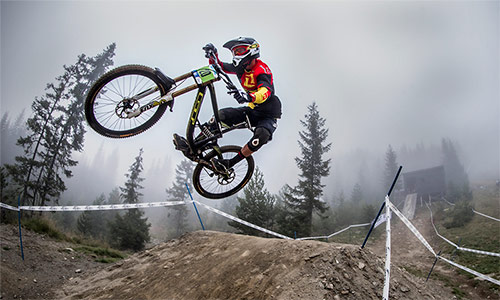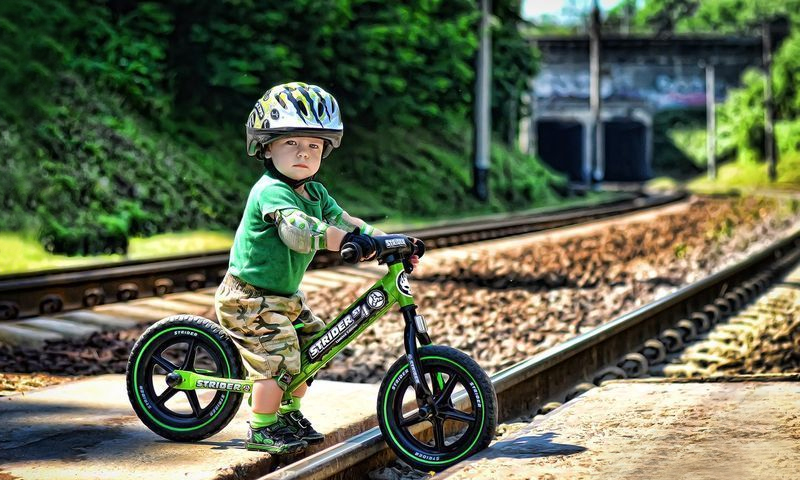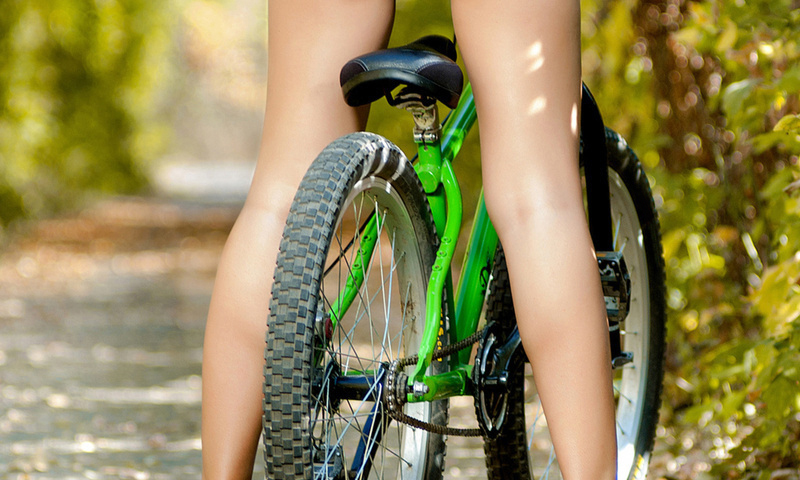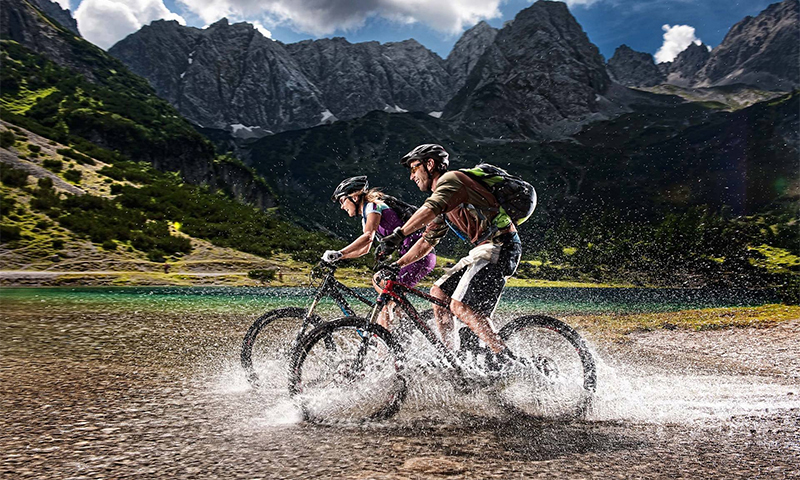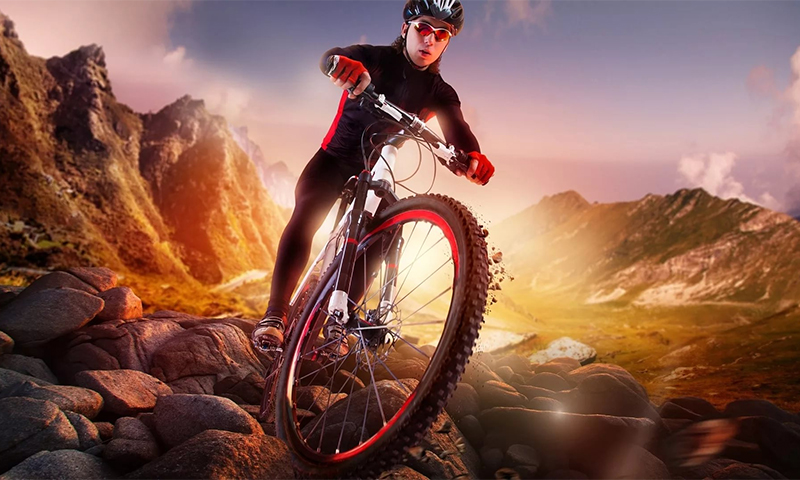Probably, there is not a single child who would not like to ride a bike. The smallest with pleasure drive on three-wheeled modelkah, the older guys are learning to ride a bike with side wheels, and teenagers with might and main rush on solid bikes, so similar to adults. Riding a bike is not just fun fun, but a great way to improve a child’s health. But only if the wheel unit is selected strictly according to the growth and age of the young owner, and also has a convenient and safe construction.
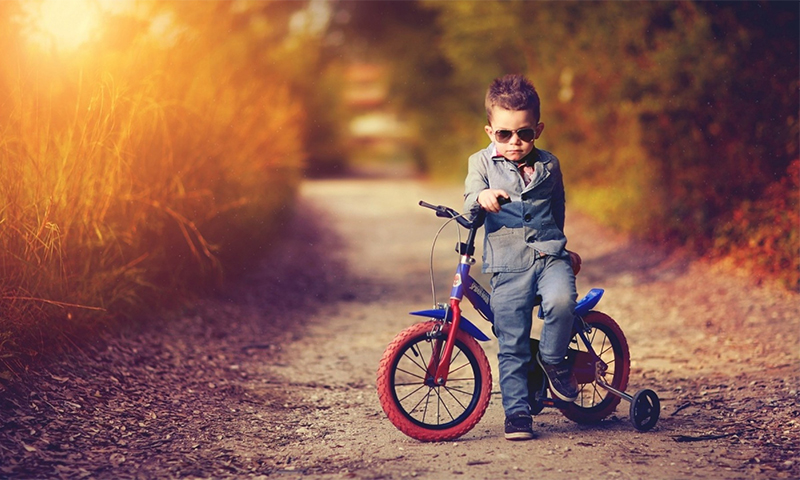
Content:
The best manufacturers of children's bicycles - which company to choose
Children's bike is not just a toy. It requires maximum reliability and safety for your baby. And yet do not forget that this transport usually serves no longer than 3-4 years - then the child simply grows out of it. You do not need to chase the most expensive and featured models, but you shouldn’t buy a cheap tarahku too.
In our market there are many good bicycles for children and adolescents - both imported and domestic production.
The most popular brands were:
- Puky;
- JAGUAR;
- Injusa;
- Rich Toys;
- Little Tikes.
In our article you can learn in detail about all the features. the best bikes these companies. But the final decision on the purchase must be made only after studying all the characteristics of children's transport.
The principle of operation and the device of the children's bicycle
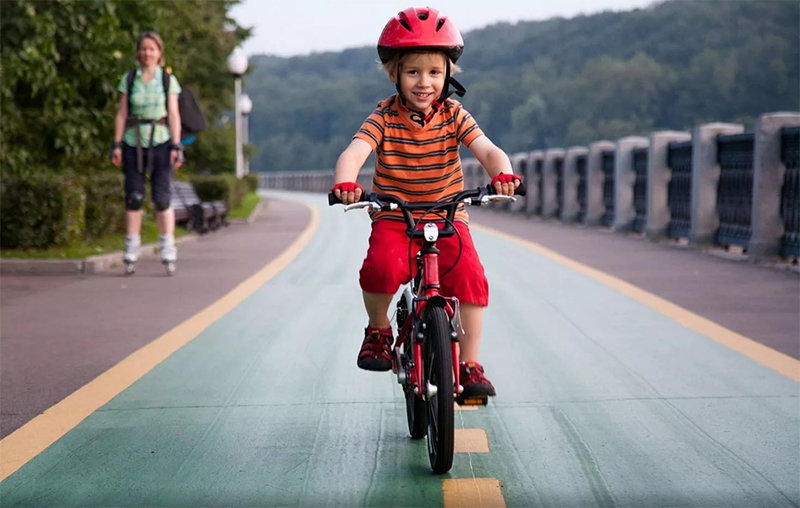
Almost 150 years have passed since the invention of the first bicycle, and the principle of operation and the “iron horse” device have not changed much.
And there is no difference whether he is an adult or a child, although the models for the youngest still have their own characteristics:
1. The frame is simpler and easier here, because it does not experience serious stress.
2. The seat and handlebars are height adjustable - thanks to this, the bike can “grow” with the child.
3. Pedals are often located on the front wheel axle, the chain transmission is installed only on two-wheeled models for schoolchildren.
Also, children's bikes can have a high handle, with which parents can comfortably control the movements of the crumbs, a basket for things, a sun shade, or even a game panel. But all these elements are found only in three-wheeled models for preschool children.
Types of children's bicycles
Tricycles

A tricycle is an ideal transport for children of 2–3 years old who are just learning to ride a bike. Here, the baby does not need to keep balance, and he can fully concentrate on the pedals and control.
Three-wheel models have an extremely simple and reliable design, but their main advantage is stability. The most common are tricycles with one front and two rear wheels, although there are also shifters among them.
The size range of tricycles is designed for children up to 100-105 cm tall.
Pros:
- High stability due to 3 points of support;
- Low weight;
- Good margin of safety;
- Bright colors that kids like;
- Many models are additionally equipped with baskets, game modules, parental handle and other useful accessories;
- Low cost.
Minuses:
- Usually have hard and loud wheels;
- Do not stack and take up a lot of space during storage.
Four Wheel (2 + 2)
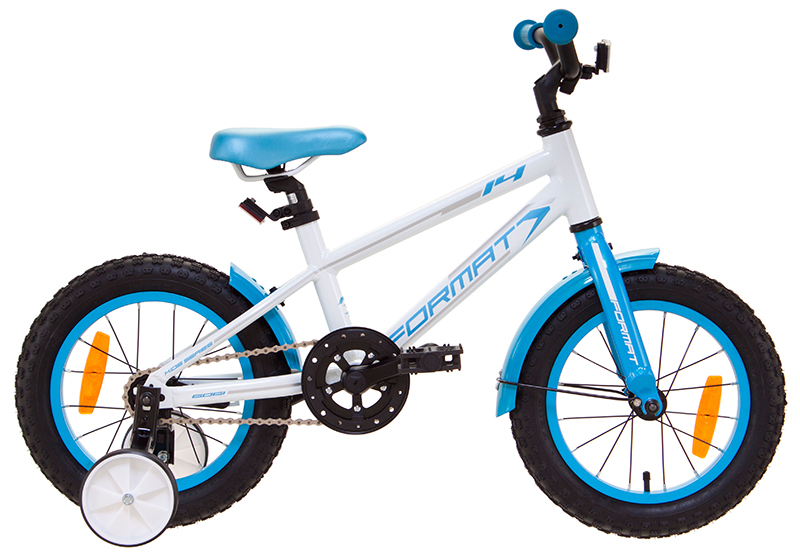
An older child, for whom the three-wheeled model is already too small, will suit a small bicycle with additional safety wheels.
Outwardly, these devices resemble the simplest adult bikes: they have a chain drive and soft rubber wheels. Side rollers can be removed as soon as the baby learns to keep balance.
Four-wheel bicycles are designed for children 4-7 years old, whose height is about 105-130 cm.
Pros:
- A variety of models with an interesting design (police bikes, sports motorcycles, etc.);
- A wide range of adjustments to the height of the saddle and steering wheel;
- Small side wheels do not interfere with riding, but only hedge;
- The child will quickly learn to balance on a bicycle;
- Some models are equipped with a removable parent handle.
Minuses:
- With a sharp turn, the chetyrekolesnik can fall on its side;
- Paws of safety rollers are constantly bent.
Two-wheeled
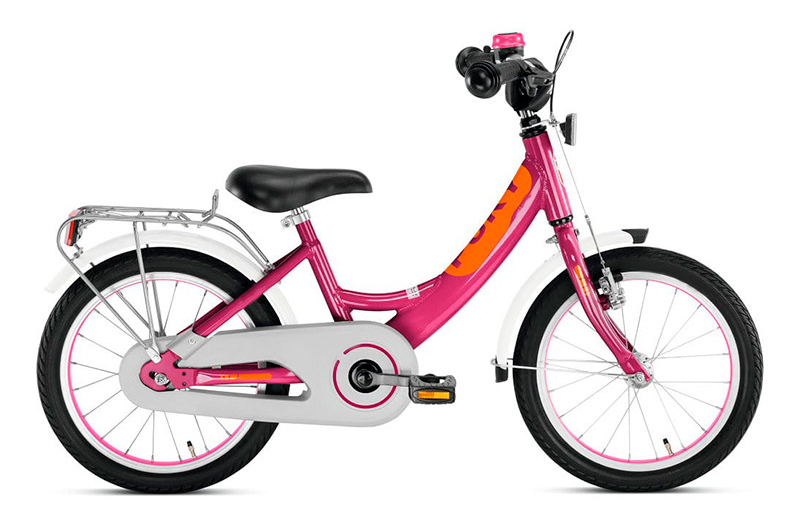
These models are designed for students who have already mastered the independent driving. Structurally, they do not differ from adult bikes - just have a slightly smaller size.
Children's copies of mountain and stunt bicycles look especially interesting, although the lion’s share of the market is still occupied by ordinary recreational vehicles.
Pros:
- Wide range;
- The presence of all the "adult" functions - up to speed switches;
- Often come with folding frames;
- Have a stylish design.
Minuses:
- Develop a decent speed and require a certain experience from the rider.
Children's bike selection options

Child's height
This is the main criterion for choosing a children's bike. So that the baby can learn to ride, he must be comfortable sitting and driving his bike. To do this, you must “try on” the model you like, sitting your child on it.
Correct fit implies a child’s flat back, the position of the arms is not higher than the level of the chest, and the knee is almost completely straightened when pedaling. If you order a children's bicycle through the Internet, it is necessary to be guided by the figures specified by the seller.
Wheel diameter will help you more or less accurately choose a model for the growth of the child:
1. Toddler growth up to 1 m will fit great with 12-inch wheels;
2. With the growth of 1.15-1.20 m, it is already possible to take a model with rims 14-16 ″;
3. A child 130-140 cm tall will be comfortable on a bicycle with wheels 18-20 ″;
4. Teenagers can already be transplanted to bikes with low frames and rims from 20 to 24-26.
In order not to be mistaken with the length of the frame, measure the gap from the "nose" of the saddle to the rudder line: it should be no more than the distance from the child's elbow to the tips of his fingers.
Frame and wheel material
Frames for children's bicycles are made from the following materials:
1. Steel;
2. Aluminium alloy;
3. Composite materials.
Three-wheeled models for the smallest can be made of hard plastic. Special strength is not required here, but the weight matters: lightweight bikes are less traumatic, and children will be easier to handle with them. Therefore, leave heavy steel for teenage bricks and junior schoolchildren take bikes with aluminum or composite frames.
Wheels on children's vehicles, too, are different:
1. Plastic - suitable for a small bicycle, on which a child of 2-3 years will ride on flat sidewalks or on the playground.
2. Rubber (inflatable) - provide maximum comfort and a soft ride, even on uneven pavement. But there is a risk of puncture cameras, and they will have to be pumped up regularly.
3. Foam rubber - combines the advantages of the two previous types of wheels. There is no air chamber under the soft tires, so the wheel cannot be pierced, but the depreciation will be rather average.
Brakes
The question of the choice of brakes torments many parents: some believe that it is necessary to teach the child to manual braking immediately, others do not see the point in using the pads at all. In fact, it all depends on the age of your child and his riding experience.
1. The handbrake with a foot on the steering wheel is suitable only for adolescents - even the 6–7 year olds have a hand that is not strong enough to use it (and fingers are often not enough).
2. For kids, the best option would be a foot brake.
3. If you still could not decide which system is better, just purchase a model with combined brakes.
Pedals
Pedals on children's vehicles are:
1. Plastic;
2. Metallic.
Of course, the second option is much stronger and more durable, so it is chosen for children aged 6 years and older. But the plastic can easily crumble by the end of the first season of intense skating or split from an accidental impact.
Look for a bike with non-slip platforms so that the child’s foot does not fly off of them. But in any case, do not take the pedals with latches. Coordination in children is not the best - having hooked the toe to the mount, the child can fall very unsuccessfully, instead of just standing up.
Security questions
For the study of all the features of the bike should not for a moment forget about the safety of the child. And this concerns not only the reliability of the design - the children's weight is small, so it is unlikely that the device will fall apart under the baby.
Most important of all are the small details, which at first seem to us insignificant:
1. Soft foam rubber on the steering wheel;
2. Rubber pedal lining;
3. Lack of sharp edges and edges in any part of the bicycle;
4. Flap covering the chain and front sprocket;
5. Reflective drawings or reflectors, so that motorists could see the child on the road at night.
For the smallest cyclists who still can not independently manage the three-wheeled transport, safety belts, crossbar-limiter at the belt level and a deep seat will not be superfluous. And the parental handle and footrests will allow the baby to get to the house comfortably when they are tired of pedaling.
Which bike to choose

1. For children under the age of 1.5-2 years old, a tricycle with a parental handle, a footrest, a folding awning and a deep seat with straps and restraints will be the best choice. The diameter of the wheels here should be about 12 inches, the frame can be taken from aluminum or from high-quality thick plastic. It is good, if it is great it will be completed with the musical panel and a capacious basket for children's things and small purchases.
2. Children 2-4 years old, still not able to keep balance, you can take a tricycle on an aluminum frame and without a parent pen. It is desirable that its weight does not exceed 4 kg, otherwise the child simply will not cope with the device if it falls or gets stuck at the curb. Here you will need non-slip pedals with rubber lining and foot brake. The size of the wheels is still the same - 12 ″.
3. Children 3-5 years old, who feel quite confident in the saddle, will like a two-wheeled bicycle with side rollers for safety. The frame can be aluminum or steel, the optimum diameter of the wheels 14-16 ″. Be sure to check that the selected model is adjustable seat height and steering, and also had all the necessary protection and reflectors.
4. Undergraduates between the ages of 6 and 9 years old will have a regular bike with a low frame and a pair of wheels 18-20 inches. Height adjustments and basic safety features are still required. As for the brake system, it is better that it was combined.
5. Teenage girls will enjoy a lightweight aluminum bicycle with a “ladies'” frame on wheels with a diameter of 20 to 24 inches. Well, if it will have a folding structure - it will simplify storage is great at home. A basket on the steering wheel, large wings and a guard to protect the chain mechanism are welcome.
6. Boys from 10 to 14 years old buy a small copy of an adult mountain bike or stunt bike. The steel or aluminum frame can be foldable, but if the child prefers an aggressive riding style, it is safer to take an all-welded one. The diameter of the wheels is chosen according to the growth of the young rider and usually does not exceed 24 inches. Hand brakes are required, and they must be installed on the front and rear wheels.
How much is a children's bike

1. A tricycle for kids with a parental handle can be bought at prices ranging from 5,000 to 16,000 rubles.
2. An ordinary tricycle without excess weight will be much cheaper - from 350 to 4000 rubles.
3. A model with additional wheels will cost 3-7,5 thousand rubles.
4. Teenage bicycles are already at "adult" prices - from 6.5 to 53 thousand.
It will be interesting to friends too

